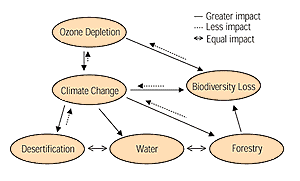
Figure 10.5: Linkages among environmental issues (Watson et al., 1998).
 Figure 10.5: Linkages among environmental issues (Watson et al., 1998). |
Awareness of the complex system of interrelated cause-and-effect chains among climate, biodiversity, desertification, water, and forestry has been growing in recent years. Now it is widely recognized that global environmental problems and the ability to meet human needs are linked through a set of physical, chemical, and biological processes. Climate change, for example, alters the global hydrological cycle, affects the boundaries and functioning of ecological systems, and accelerates land degradation and desertification (Figure 10.5). These negative impacts in turn reinforce each other through feedback loops, which results in a serious threat to land productivity, food supply, fresh-water availability, and biological diversity, particularly in vulnerable regions (Watson et al., 1998).
Global environmental problems are addressed by a range of individual instruments and conventions—UN Convention on Climate Change, Convention on Biological Diversity, Convention to Combat Desertification, and Forestry Principles. Each of the instruments focuses on a specific issue and has its own defined objectives and commitments, with the exception of Forestry Principles, which has no binding legal agreement. A great deal of interaction exists among the environmental issues that these instruments address, and there is also a significant overlap in the implementation of the instruments. They contain similar requirements concerning (UNDP, 1997):
Table 10.4 summarizes the actions and commitments of the parties under the different instruments. The requirements represent a significant burden, especially on developing countries, in terms of human and financial resources. Table 10.4 illustrates the wide scope for overlaps between the instruments and the risks that their implementation will lead to a duplicative effort.
It is recognized (UNDP, 1997) that global conventions and instruments “can be more efficiently implemented through a greater understanding of the commonalities and overlaps between them and a co-ordinated and harmonized approach to their implementation at the local, national, and international levels. In other words, creating synergy among the instruments and their requirements”. Indeed, linkages between instruments provide opportunities to implement them in a mutual-reinforcing manner, avoiding duplication. At least three clusters of activities are likely to gain advantage from potential synergies in implementing the conventions: the development and strengthening of organizational structures, capacity-building interventions, and data collection and information processing.
Implementing the conventions involves the participation of institutional structures with different responsibilities and concerns, their policy agendas are generally limited in scope, and frequently their immediate objectives diverge. Further, environmental issues are in general broadly diffused through different government agencies, endowed with uneven resources in terms of both authority and material resources. This institutional fragmentation, especially in developing countries, results in a lack of co-ordination and duplication of activities in areas where common organizational procedures, flows of information, and a set of coherent individual institutional actions are required for effective policy actions. Reporting to the respective conferences of the parties, setting up appropriate legislation, and formulation and periodical updating of national action plans are stipulated in the conventions. These need to move towards convergence on overlapping issues, seeking consensus, and agree on policy frameworks within which the ultimate goals can be achieved with greater effectiveness. Therefore, the opportunities for synergies can be exploited by enhancing and strengthening linkage mechanisms between institutions, either at the implementation of specific tasks or functions or through the creation of more formal and permanent links between different actors. The types of linkage mechanisms that might be most successful will depend on institutional, political, and economic factors in each specific case.
Continues on next page
|
Other reports in this collection |